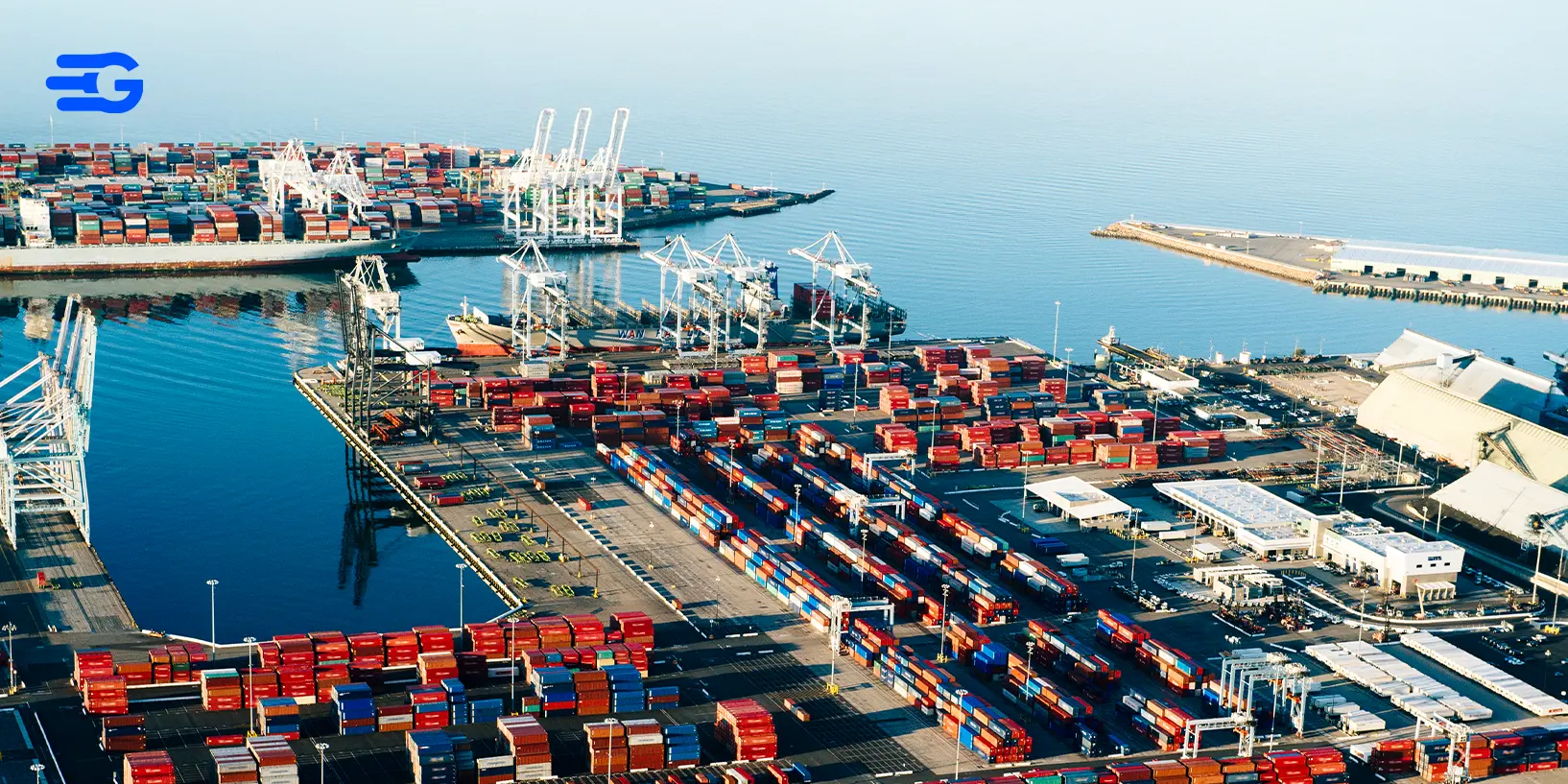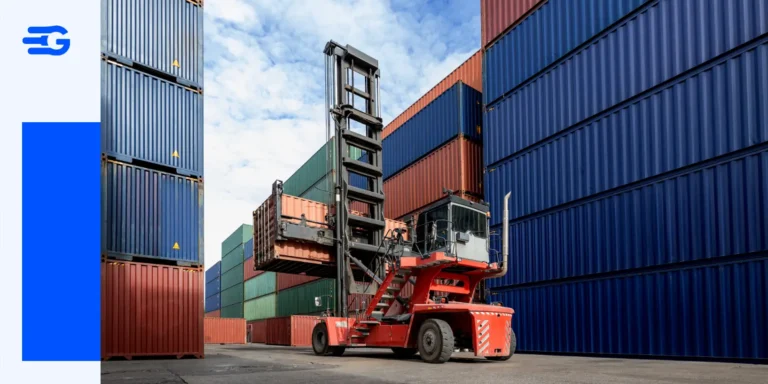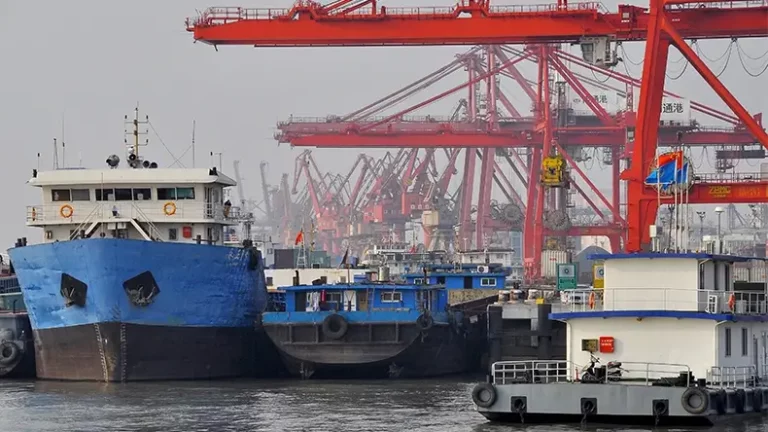10 Critical Global Port Statistics and Facts to Know Before 2025
The year 2024 was a transformative one for global logistics and maritime trade. Marked by a recovery from pandemic-induced disruptions, the industry saw steady growth, technological advancements, and renewed investments in sustainable practices. However, geopolitical tensions, environmental pressures, and labor disputes continue to challenge global supply chains. Key elections in France, the United Kingdom, and the United States further shaped policies impacting infrastructure, trade agreements, and labor rights, adding new dimensions to the evolving logistics landscape.
Global Maritime Trade Growth
Global maritime trade grew by 2.4% in 2024, marking a recovery from the pandemic’s supply chain disruptions. However, chokepoints such as the Suez and Panama Canals remain vulnerable to geopolitical and environmental pressures, including droughts that restrict vessel traffic. Elections in Europe and the U.S. highlighted the need for international cooperation in addressing these vulnerabilities, with increased emphasis on alternative routes and green technologies like hydrogen-powered vessels.
Port of Shanghai Maintains Dominance Amid Seasonal Fluctuations
The Port of Shanghai, handling over 47 million TEUs in 2024, remains the world’s busiest container port. However, operations are expected to slow starting the second week of January 2025 due to the Lunar New Year holiday, which traditionally impacts production and exports from China. Policy shifts in trade agreements, influenced by elections in Europe and the U.S., may play a role in diversifying trade routes to reduce dependency on single regions.
Impact of the Los Angeles Port Strike
The LA port strike in 2024 disrupted operations at one of the United States’ most critical trade hubs, affecting 20% of containerized imports. With a second strike planned for January 2025, industries reliant on just-in-time inventory are diversifying supply chains by utilizing East Coast ports and inland facilities. The U.S. election’s focus on labor rights and automation has intensified discussions on balancing workforce interests with operational efficiency.
U.S. Ports Recovery in 2024
U.S. ports rebounded strongly in 2024, with the Port of Los Angeles and Long Beach recording a 14.7% combined growth, processing over 9 million TEUs. Improved efficiency measures, including expanded rail connectivity and AI-driven cargo management systems, have driven this growth. The elections emphasized investments in infrastructure and technology, aligning with broader strategies to sustain this recovery.
TEU Throughput Surge at Modernized Ports
Modernized ports like the Port of Virginia led the charge in efficiency, with a 26.4% TEU throughput increase between 2020 and 2024. Investments in AI-powered scheduling and state-of-the-art super post-Panamax cranes have positioned it as a model for operational excellence. European elections underscored the importance of similar digital transformations, ensuring ports remain competitive in a dynamic trade environment.
Singapore’s Transshipment Crisis Highlights Global Dependence
Singapore experienced severe congestion in mid-2024 as vessels rerouted from the Red Sea due to geopolitical tensions. The backlog disrupted schedules across Europe and the Americas, highlighting the vulnerability of transshipment-dependent supply chains. European and U.S. elections called for enhanced infrastructure resilience and multi-port collaboration to address such single-point failures.
European Ports Rebound, but Challenges Remain
European ports like Rotterdam and Antwerp-Bruges returned to growth in 2024 after a challenging 2023, aided by increased trade with Asia. However, these ports face capacity limitations and competition from emerging Baltic hubs. The elections in France and the U.K. have fueled policy initiatives supporting multimodal connectivity and automation to sustain recovery and compete globally.
Infrastructure Investment Boom Drives Future Resilience
Global port infrastructure investments reached $73 billion in 2024 and are projected to grow to $132.6 billion by 2030. This includes significant spending on sustainable energy initiatives like electrified port equipment and green hydrogen fueling stations. Election-driven policies in major economies have catalyzed these investments, ensuring ports can accommodate mega-vessels and meet tightening environmental regulations.
Expansion of Super Post-Panamax Cranes
The adoption of super post-Panamax cranes surged in 2024, enabling ports to handle the largest container vessels. The Port of Savannah alone added 20 such cranes, boosting its handling efficiency by 25%. Elections globally have spotlighted the role of technological upgrades in reducing turnaround times and supporting growing trade volumes.
January 2025 Strike at LA Port Looms Large
The potential January 2025 strike at the Port of Los Angeles is expected to significantly impact supply chains, particularly for industries reliant on West Coast imports like electronics and automotive components. Anticipated disruptions have prompted businesses to stockpile inventory and secure alternative logistics solutions. The U.S. election’s outcomes have emphasized the need for comprehensive labor agreements to ensure stability.
Trends Behind the Records
The statistics highlighted above are not isolated events but part of broader trends shaping the global port industry. Key forces such as technological innovation, sustainability, and infrastructure investments have played a pivotal role in driving these records. Elections in major economies have further influenced these trends, signaling shifts in trade policies and environmental commitments. Understanding these dynamics is essential for stakeholders aiming to navigate the complexities of global trade.
Automation and Technology
Automation and technology are transforming the efficiency and cost structure of port operations:
- AI and Automation: Ports like Rotterdam and Los Angeles are utilizing AI-powered scheduling tools, predictive maintenance systems, and automated cranes to reduce downtime and operational costs.
- Digital Twinning: The Port of Hamburg uses digital twinning technology to simulate operations in real time, enabling better decision-making and congestion management.
- AI-Powered Analytics: Ports such as Virginia have adopted AI systems for predictive analytics, improving cargo flow and minimizing delays. Policy directions influenced by elections in the U.S. and Europe are accelerating adoption of such technologies.
Sustainability and Green Logistics
Environmental initiatives are no longer optional but essential for long-term competitiveness:
- Green Energy: The Port of Rotterdam has led the charge by integrating green hydrogen fueling stations, while other ports like Los Angeles are electrifying their equipment to reduce emissions.
- Energy Efficiency: The use of renewable energy sources and energy-efficient infrastructure has boosted operational performance while meeting global emission standards.
- Eco-Incentives: Some ports offer reduced fees for vessels with lower emissions, encouraging greener shipping practices. Election-driven climate policies have added urgency to these initiatives.
Infrastructure Investments
Port expansions and infrastructure upgrades are driving higher capacities and improved service:
- Major Projects: The Port of Savannah’s addition of 20 super post-Panamax cranes and the expansion of berthing facilities at the Port of Singapore highlight the scale of recent investments.
- Channel Deepening: Ports like Houston have invested in dredging projects to accommodate larger vessels, ensuring they remain competitive in global trade. Policies shaped by elections in key economies are channeling resources into these critical upgrades.
Implications for the Logistics Industry
The trends shaping port performance have significant implications for supply chain professionals and businesses relying on global trade:
- Strategic Planning: Companies must build flexibility into their supply chains by diversifying shipping routes and leveraging smaller or alternate ports to mitigate risks such as strikes or congestion.
- Technology Adoption: Analytics tools like GoComet enable companies to track shipments in real-time, benchmark freight rates, and optimize routing for cost and efficiency.
- Sustainability Mandates: Businesses need to align their operations with green logistics trends, which are becoming critical for compliance and market competitiveness. Election-driven mandates on sustainability are making this alignment increasingly urgent.
By staying agile and informed, supply chain professionals can turn these challenges into opportunities, ensuring their operations remain resilient.
As we approach 2025, global ports are at the crossroads of transformation, driven by automation, sustainability, and strategic investments. These advancements, coupled with challenges like labor unrest and geopolitical tensions, are reshaping the logistics landscape. Election outcomes in 2024 have further influenced trade policies, labor rights, and environmental commitments, highlighting the interconnectedness of political decisions and global logistics. By leveraging advanced tools and adapting to these trends, businesses can stay competitive in an ever-evolving market.





